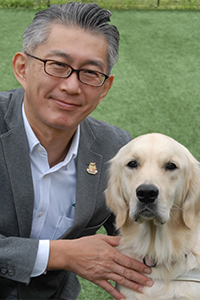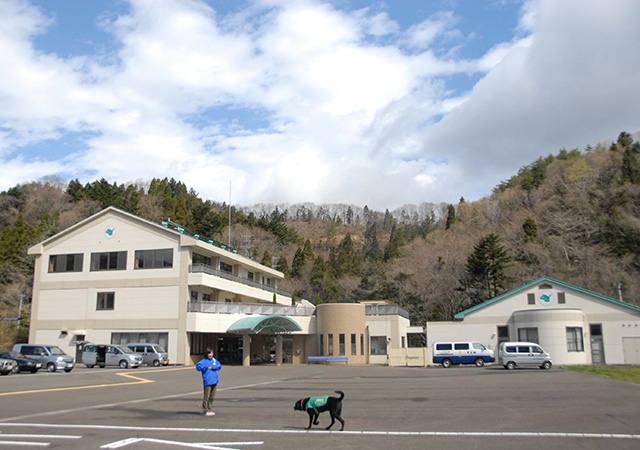Director Focus - Manabu Nemoto, Sendai Training Centre
2022. 10. 25
News
Interview with Manabu Nemoto, Director of Sendai Training Centre
How did you first get involved in the guide dog movement?
After graduating from university, I worked for a pet food manufacturer for two years. I wanted to work more directly with dogs, and one day I happened to stop by a bookstore and found a book about guide dog trainers. There I learned about the role of guide dogs and the work of trainers and became interested in this job where I could contribute to society through dogs. In 1999, I joined the Kanagawa Training Centre and worked as a kennel staff for a year. After that, I was certified as a Guide Dog Trainer and Guide Dog Mobility Instructor. In April 2007, I studied orientation and mobility training for long cane at the Nippon Lighthouse Welfare Centre for the Blind. I arrived at the Sendai Training Centre in October of the same year. In 2010, I returned to the Kanagawa Training Centre to focus on user support duties; in 2018, I returned to the Sendai Training Centre to take on the role of Centre Director.
What do you like to do outside work?
My hobby is watching sports. I have been watching volleyball on TV recently, but I would like to go out to the stadiums as Sendai is home to various sports such as baseball, soccer, and basketball.
I am also concerned about my lack of exercise these days, so I would like to try “bouldering" to get some exercise.
What is the feature of Sendai Training Centre?

Sendai Training Centre was established on May 24, 2001, and celebrated its 20th anniversary last year. In addition to its role as the only guide dog training facility in the Tohoku region, it is also unique in focusing on visually impaired rehabilitation projects. It has been providing orientation and mobility training for long cane and daily living skills at home since 2002, and in 2004 it started the “Camp for Visually Impaired Children" to provide continuous rehabilitation for the visually impaired from elementary school age.
In dog training, we train dogs to walk on snow-covered roads in the Tohoku region, where it snows in the winter. The goal is to get the dogs accustomed to snow-covered roads so that the users can go out safely and comfortably even when road conditions change due to snowfall.
What is the difference between Sendai 20 years ago?
When I joined JGDA in 1999, the Sendai Training Centre was not yet built and was just an empty field. At the time of its opening, rehabilitation for the visually impaired had not yet penetrated the Tohoku region, and there were only ten guide dogs active in Miyagi Prefecture (Sendai is the prefectural capital of Miyagi Prefecture). Over the past 20 years, the number of guide dogs has increased to 23 (as of March 2022), and we feel that we are gradually gaining recognition from the local community.
What is the appealing point of Sendai and your message to people worldwide involved in the guide dog sector?
The nickname of the Sendai Training Centre is “Smilewan Sendai” (wan means woof in Japanese). Our staff, who are full of individuality, are always smiling, and we want to make the centre a place where people who are blind or have difficulty seeing can smile, too.
Sendai is also known as the “City of Trees" for its abundant nature, and you can enjoy the richness of the changing seasons.
Please come and visit the city of Sendai and our training centre.






